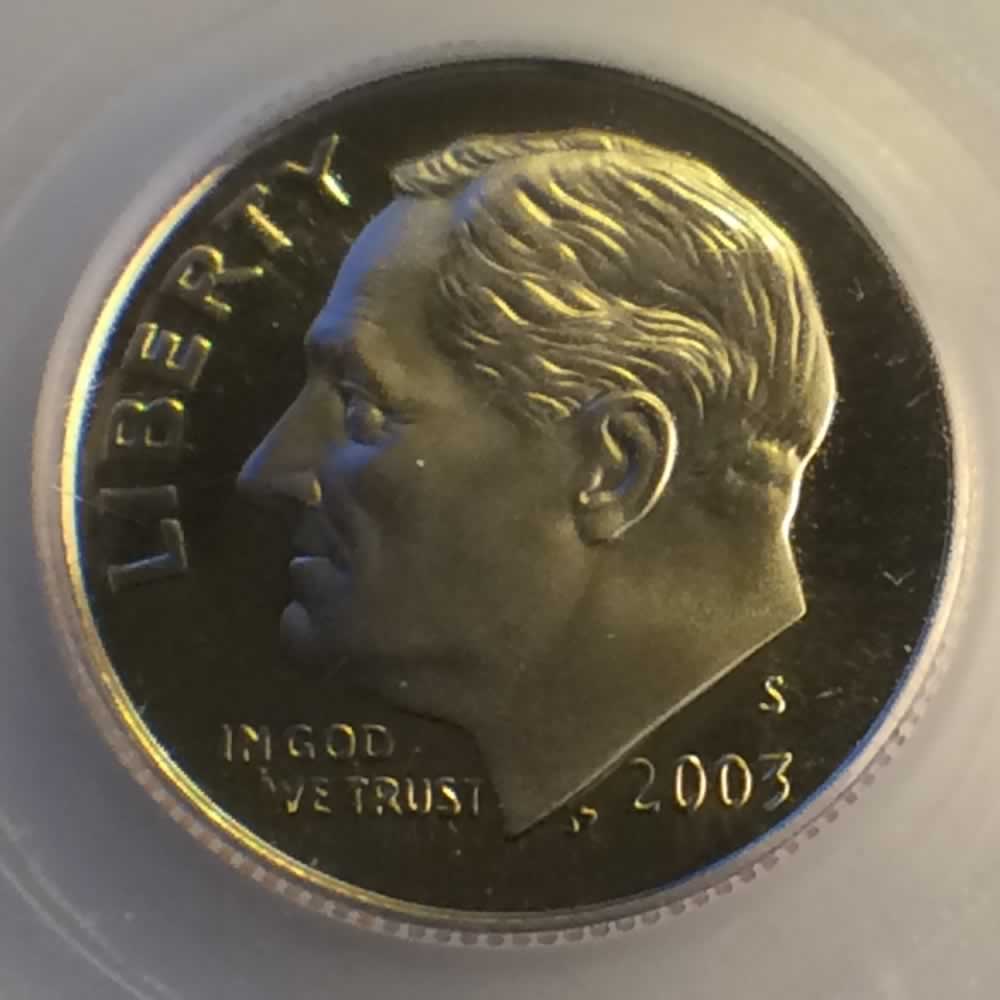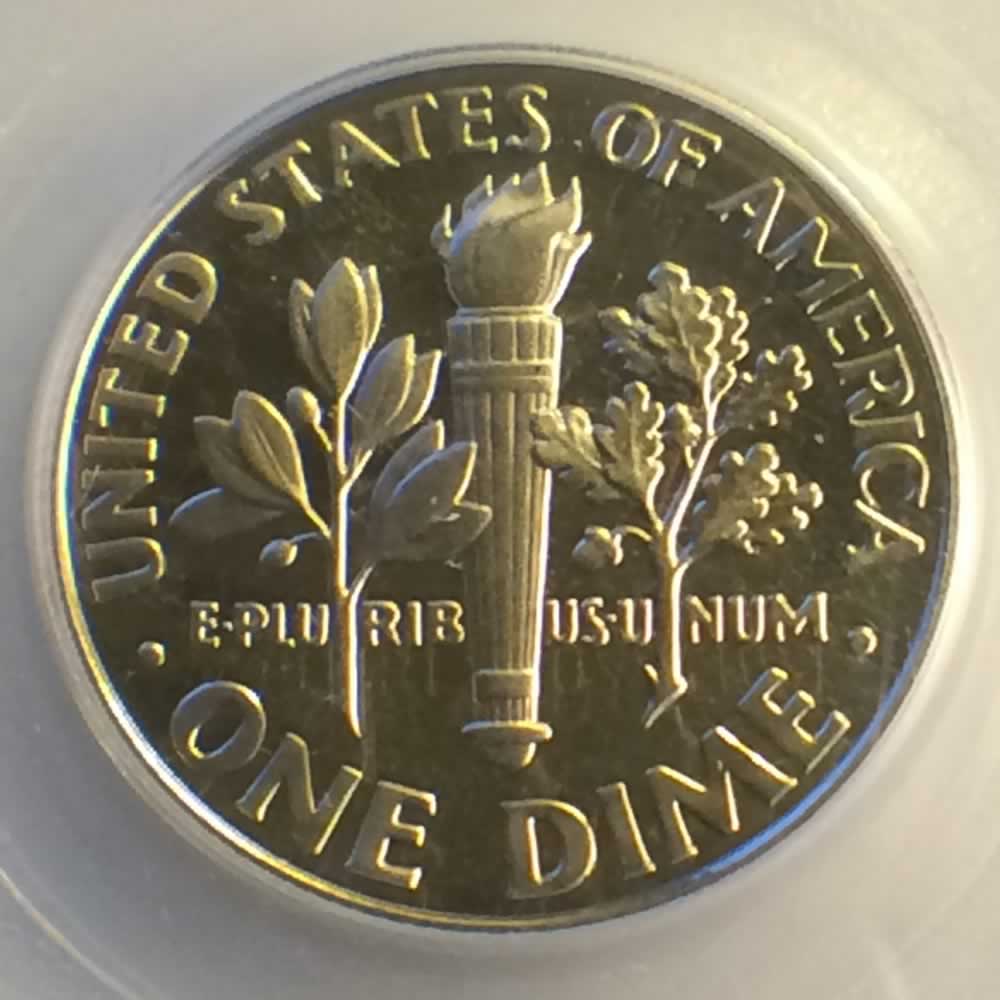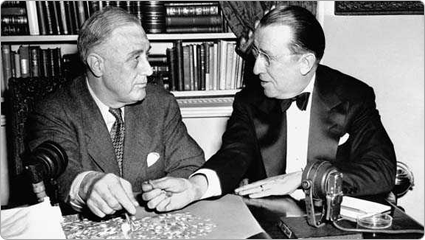1946-Date - Franklin D Roosevelt Dime
The Mercury dime was replaced in 1946 by the Roosevelt dime. It was designed in honor of President Franklin D. Roosevelt, who died in April 1945. The dime was chosen due to Roosevelt's work in founding the National Foundation for Infantile Paralysis and March of Dimes fund raising efforts that dated back to his first term.
Designed by John R. Sinnock, the dime initially had a composition of 90% silver and 10% copper and later changed to a copper/nickel composition. Other than a composition change, the dime has not undergone any design changes to either the obverse or reverse making it currently the longest running coin series with an unchanged obverse and reverse design.
The obverse design depicts the 32nd President Franklin D. Roosevelt facing left. Below the chin of the design is the motto IN GOD WE TRUST and at the base of the bust design are the designer's initials JS. A mint mark for Philadelphia (P), Denver (D), or San Francisco (S) is located just above the date for coins from 1968.
The reverse design features a a torch, oak branch, and olive branch covering the motto E PLURIBUS UNUM while the overall design is encircled with the words UNITED STATES OF AMERICA and ONE DIME separated by two dots. For coins from 1946-1964 a mint mark for Denver (D), or San Francisco (S) is located to the left of the bottom of the torch.
Quick Coinage Facts
Years Minted: 1946-Present
Number of Types: 2
Mints: Philadelphia, Denver, San Francisco
Type 1 Composition: 0.900 silver, 0.100 copper
Type 2 Composition: 0.750 copper, 0.250 nickel
Diameter: 17.9 mm
Type 1 Weight: 2.50 grams ( 0.07234 ounces of silver)
Type 2 Weight: 2.27 grams
Type 1 Total Mintage: approx. 6,340,367,673
Type 2 Total Mintage: still in production
Edge: reeded
REF
Dime (United States coin)
Source: en.wikipedia.org
The dime is a ten-cent coin, one tenth of a United States dollar, labeled formally as "one dime". The denomination was first authorized by the Coinage Act of 1792. The dime is the smallest in diameter and is the thinnest of all U.S. coins currently minted for circulation. As of 2011, the dime coin cost 5.65 cents to produce.
Mintage
Since 1946 the Roosevelt dime has been minted every year. Through 1955, all three mints, Philadelphia, Denver, and San Francisco produced circulating coinage; production at San Francisco ended in 1955, resuming in 1968 with proof coinage only. Through 1964 "D" and "S" mintmarks can be found to the left of the torch. From 1968, the mintmarks have appeared above the date. None were used in 1965–67, and Philadelphia did not show a mintmark until 1980 (in 1982, an error left the "P" off a small number of dimes, which are now valuable). To commemorate the 50th anniversary of the design, the 1996 mint sets included a "W" mintmarked dime made at the West Point Mint. A total of 1,457,000 dimes were issued in the sets.
Value 0.10 U.S. dollar
Mass 2.268 g (0.0729 troy oz)
Diameter 17.91 mm (0.705 in)
Thickness 1.35 mm (0.053 in)
Edge 118 reeds
Composition 91.67% Cu
8.33% Ni
Years of minting 1796–present
Obv. Design Franklin D. Roosevelt
Obv. Designer John R. Sinnock
Obv. Design date 1946
Rev. Design olive branch, torch, oak branch
Rev. Designer John R. Sinnock
Rev. Design date 1946
REF
Coin Specification
Source: USMint.gov
Denomination: Dime
Composition: Cupro-Nickel 8.33% Ni Balance Cu
Weight: 2.268 g
Diameter: 0.705 in. 17.91 mm
Edge: Reeded
No. of Reeds: 118
REF
Specification
Source: coin-collecting-guide-for-beginners.com
Type Roosevelt Dime
Designer John R. Sinnock
Years Minted 1965 to Date
Weight 2.27 grams
Composition outer layers - 75% copper and 25% nickel
bonded to an inner core of pure copper
Diameter 17.9 mm
Edge reeded
Mints Philadelphia - no mint mark
Denver - D
San Francisco - S
West Point - W - 1996W was issued in Mint sets only with a mintage of 1,457,000
REF
1 Dime "Roosevelt Dime"
Source: en.numista.com
KM# 195a
Features
Country United States
Years 1965-2014
Value 10 Cents = 1 Dime (0.1 USD)
Metal Copper-nickel clad Copper
Weight 2.268 g
Diameter 17.91 mm
Thickness 1.35 mm
Engraver John R. Sinnock
Shape Round
Orientation Coin alignment ↑↓
Edge Reeded (118 reeds)
REF
 US 2003 S Roosevelt Dime ( 10C )
US 2003 S Roosevelt Dime ( 10C )



